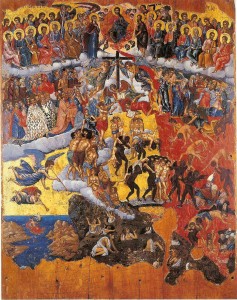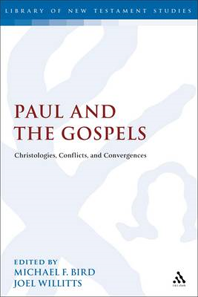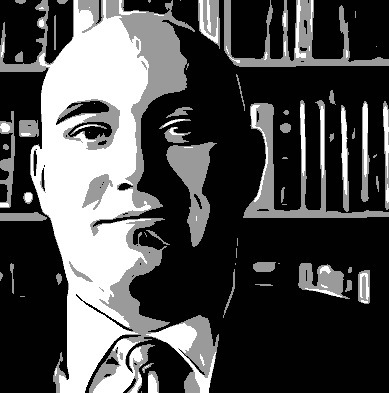I am excited to announce the acceptance of my paper proposal for the 2016 annual meeting of the Southwest Commission of Religious Studies on March 11-13. This paper has slowly developed out of the research for my upcoming article in the 5.2 volume of the Journal for the Study of Paul and His Letters entitled “‘So Shall Your Seed Be’: Paul’s Use of Gen 15:5 in Rom 4:18 in Light of Early Jewish Deification Traditions.” I shared the idea for this paper with Matthew Thiessen of Saint Louis University two years ago at the annual meeting of the SBL in Baltimore which resulted in him citing me in his upcoming book Paul and the Gentile Problem being published with Oxford Press and due to come out in March of this year. The need for this study was apparent from the defense of my paper against NT Wright’s push back in the Pauline Epistles section last year where my friend Brant Pitre also came to my defense using the same text (1 Cor 15) and told me afterwards my paper “blew his mind” (that was very cool coming from a scholar of his caliber because his stuff has blown my mind as well). After conversations with Michael Heiser and Daniel Streett regarding my argument, I feel confident about finally presenting on the topic. The abstract of the paper is as follows:
TITLE
A Neglected Deuteronomic Scriptural Matrix to the Nature of the Resurrection Body in 1 Cor 15:39-42?
ABSTRACT
In the Pauline discussion regarding the nature of the resurrection body in 1 Cor 15:35-49, he employs the metaphor of the sowing of the natural (or earthly) body and the raising of the spiritual (or heavenly) body. Both kinds of bodies differ in glory and are fit for different habitats. In order to demonstrate this, in 1 Cor 15:39-42 Paul enumerates a list of the creatures who inhabit the earth followed by those who inhabit the heavens, the resurrection body being likened to the later. Scholars have generally understood the background of this list to be found in the creatures from Genesis 1, even though they do not follow the same order (as recognized by Fitzmyer, Ciampa, Rosner, etc.). Other scholars have put forth reasons for this discrepancy by suggesting that the list evokes the cosmology of popular Greek philosophy (i.e. Martin). This paper seeks to propose an alternate answer to this problem. The list of earthly and heavenly creatures here in 1 Cor 15:39-42 follows the same order of creatures as enumerated in the aniconic discourse of Deut 4:15-19. If this is in fact the text Paul is alluding to, he is more than likely participating in an exegetical tradition in the Second Temple period which reads Deut 4:15-19 as part of a wider Deuteronomic scriptural matrix employed to describe the nature of the cosmos as constructed and administered by God, appointing the celestial bodies as the gods or angels in his cosmic polis as attested in Philo, Spec. Laws 1.13-19. Reading the present text within this scriptural matrix not only supplies a strong argument for this particular enumeration of creatures, but also provides a more robust reading of the passage in its wider context, connecting the language of the abolishing of the principalities and powers in 1 Cor 15:24 with the earlier discussion in 1 Cor 6:2-3 regarding the judgment of the cosmos and the angels.
Well, hope to see you there, and look forward to some critical engagement and dialogue. This will build off of a similar construct in my previous work and hopefully be a welcome contribution to the conversation of deification in Paul as well as conversations regarding Paul’s Judaism.







 Apparently, God’s love is so important that to talk of Jesus’ father blinding people so that they won’t see bordered on heresy. It is like everyone gladly acknowledges, in theory, God’s hatred of things (or people) yet we must never speak of it; It’s there but never comes into play — like the dark side of the moon. This hermeneutical insistence among Christians (that I know either personally or through forms of media) has always puzzled me.(I can’t think of a way that deliverance can be accomplished apart form judgment.) But, since I do not share the need to expunge hatred from God I will present the case for YHWH (or Jesus’ Father) as being the referent for this phrase. (Please note: I am not saying YHWH has to be the referent but, he could be the referent.)
Apparently, God’s love is so important that to talk of Jesus’ father blinding people so that they won’t see bordered on heresy. It is like everyone gladly acknowledges, in theory, God’s hatred of things (or people) yet we must never speak of it; It’s there but never comes into play — like the dark side of the moon. This hermeneutical insistence among Christians (that I know either personally or through forms of media) has always puzzled me.(I can’t think of a way that deliverance can be accomplished apart form judgment.) But, since I do not share the need to expunge hatred from God I will present the case for YHWH (or Jesus’ Father) as being the referent for this phrase. (Please note: I am not saying YHWH has to be the referent but, he could be the referent.)





